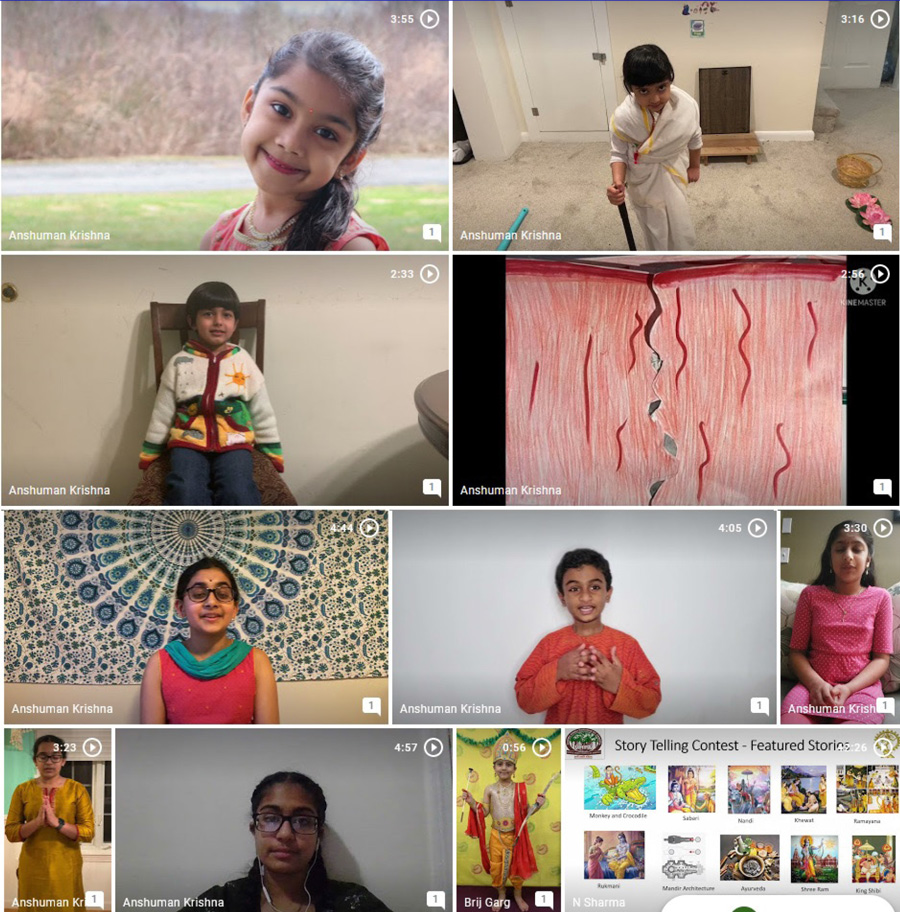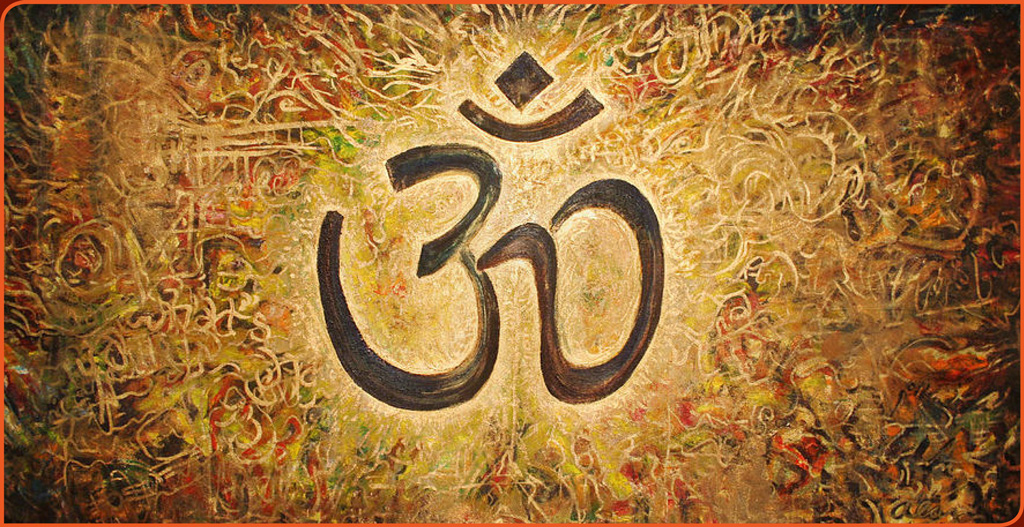The VHPA Atlanta chapter proudly hosted the Balvihar National Training Workshop on March 29, 2025. Participants included Balvihar schools from across the country—Illinois, Maryland, Virginia, Massachusetts, Connecticut, Indiana, California, Pennsylvania, Minnesota, Tampa, and Georgia.
Balvihar, first established in the U.S. in 1975, is a flagship educational initiative of VHPA. Its objective is to instill Hindu culture, traditions and sanskars in the children being raised in Hindu or interfaith families in the US. VHPA Balvihars are open to any family that wishes to familiarize themselves with the Hindu way of life, through Dharmic teachings or through learning a heritage language Bharat. This first-ever Balvihar National Workshop was organized to commemorate 50 years of Balvihar’s impactful journey—honoring the pioneers, bringing together volunteers nationwide, and charting the path forward for the next 50 years.
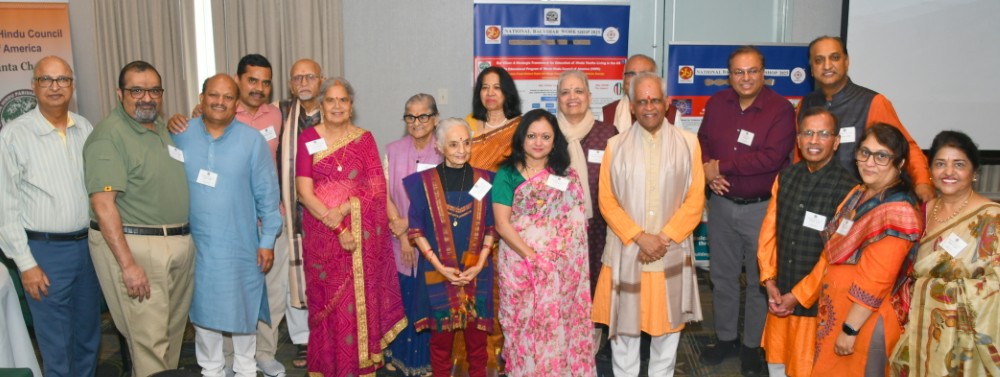
Inaugural Session: Tradition Meets Vision
The workshop began with a warm welcome from VHPA President Smt. Tejal Shah ji, followed by the ceremonial Deep Prajwalan led by Smt. Asha and Shri Gaurang Vaishnav ji, accompanied by the chanting of the Deep Jyoti Mantra. Tejal ji then recited the Ekatmata Mantra, a prayer celebrating harmony and unity.
Smt. Manju Tiwari ji, a veteran Balvihar karyakarta from Atlanta and VHPA’s Sanskar pillar Vice President, delivered the opening remarks and introduced Smita Daftardarji, a long-time VHPA Atlanta volunteer, as the emcee for the day .
As is tradition with all VHPA events, an inspiring Bhav-geet set the tone for the day. The chosen song, “Eesh hame deta hai sab kuchh, ham bhi to kuchh dena seekhein”, beautifully echoed the spirit of giving back which is at the heart of VHPA. The bhavgeet was led by Jaya Asthana ji and a team of volunteers, with enthusiastic participation from the audience.
Keynote Address: Defining Hindu Identity in a Multicultural Landscape
The keynote speaker for the event, Shri Abhay Asthana ji, past president of VHPA and current chairman of the advisory board. His talk was insightful, inspiring, and deeply thought-provoking. He beautifully articulated the role of Balvihar in establishing the Bharat-vanshi and the Hindu identity in the multi-layered identity of a child growing up in a Hindu family in America. While the American identity gets reinforced with actions like the pledge of allegiance in the school, Abhay ji pointed out, the Bharateeya origin and the Hindu identity does not actively get rooted in the child’s mind. Balvihar, in partnership with parents, plays a unique and irreplaceable role in helping a young child understand the meaning of being a Bharat-vanshi and a Hindu, through learning Hindu values, culture and traditions. While the American identity is certainly a thing to be proud of, these other two identities need to be embraced as well, by the child, in order to grow up as a confident and fearless individual.
Meet the Balvihars:
The keynote was followed by the first session of the workshop “Know Your Balvihars” which brought together all Balvihar chapters to discuss their progress, strengths, and challenges. The session was moderated by Manish Thouri ji, Balvihar coordinator, DC and Neetu Sharma ji Balvihar coordinator Atlanta Cobb Balvihar. Balvihar coordinators from Maryland, Virginia, Massachusetts, Connecticut, Indiana, California, Pennsylvania, Minnesota, Tampa and Georgia presented an overview of their programs, focusing on student enrollment, teaching methodologies, strengths, and the challenges they face. Most of the Balvihars shared their strengths as having dedicated volunteers, a structured curriculum that incorporated interactive learning with storytelling, games, and digital tools to make lessons engaging. Students participated in public speaking, storytelling, and cultural programs to develop confidence. Some chapters offer remote learning, digital resources, and hybrid models to expand access.
All Balvihars focus on cultural Integration, celebrating Hindu festivals, rituals, and teaching values to provide a holistic learning experience. A very important point raised by Shri Vipul Parikh ji, was to address the linguistic and cultural needs of children of second generation Hindu American parents, who themselves may not be very familiar with languages of Bharat and the Dharmic philosophy. Some common challenges that emerged from the presentations, faced by almost all Balvihars, were student retention, especially at the high school level, parental engagement, and the students’ struggle with balancing academics with cultural education. To break the ice, a lively “Know your Balvihar” Kahoot trivia game and a playful selfie challenge brought laughter and bonding to the room—reminding everyone that learning can be joyful.
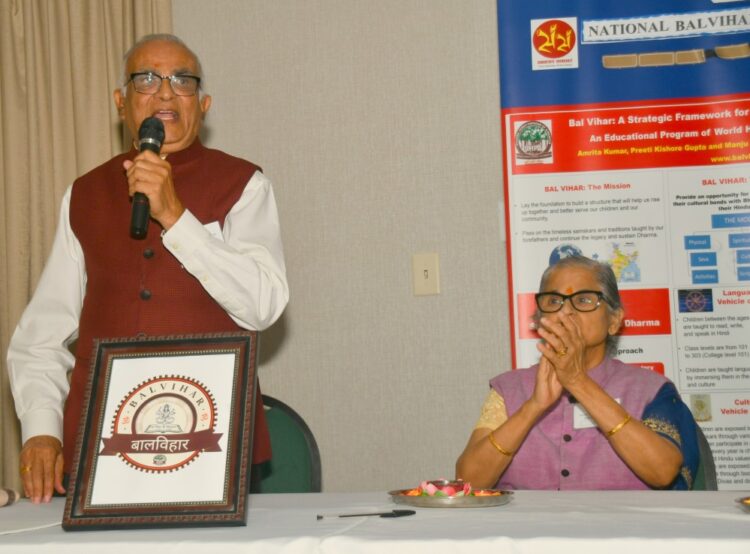
Honoring the Trailblazers: Celebrating 50 Years of Service
The celebration of 50 years of Balvihar would be incomplete without the gracious presence of our senior most VHPA karyakartas, whose path breaking work established Balvihars in several locations in the US, and made possible five decades of continuous service to the Hindu community. The trailblazers, namely Smt. Asha and Shri Gaurang Vaishnav ji from Tampa, Smt Jaya and Shri Abhay Asthanaji from Boston, Smt Amita and Shri Sanjay Mehtaji from New Jersey and Dr. Shobhana Vora from California were felicitated for their contribution in establishing and running Balvihar in their communities. Smt Veena Katdare Atlanta chapter president and Smt Kusum Khurana, Atlanta chapter Vice President welcomed them with the Tilak. Shri Amitabh Mittal ji, Gen Sec VHPA, shared their accomplishments over the years, in various capacities within VHPA. Karyakartas Shri Vishal Agrawal ji from Minneapolis, Shri Mahendra Sapaji from DC, Shri Rakesh Guptaji, Shri Rajesh Chatkara ji, Shri Shyam Tiwariji, Shri Prakash Guptaji and Smt Sneha Mehta ji from Atlanta presented them with shawl and Shri Ram Paduka, as a token of appreciation of their contribution.
Balvihar Logo: A Symbol of Legacy and Aspiration
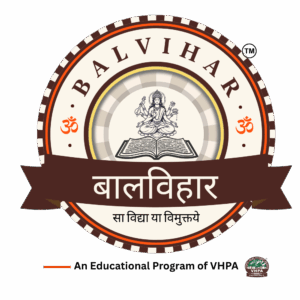 Following this, Shri Gaurang Vaishnav ji , who is credited with starting the first ever VHPA Balvihar in the US, was invited to unveil the newly designed logo for VHPA Balvihar, with its motto “ सा विद्या या विमुक्तये” (saa vidya yaa vimuktaye) It is said that a picture is worth a thousand words – it couldn’t be truer for the Balvihar Logo. The team, and primarily Manish Thouri ji, spent hours on end designing and revising the logo that would accurately reflect not just the mission and vision, but also the aspirations of Balvihar. As the logo was unveiled, Manish Thouri ji read out the symbolism behind the logo – with the brown color depicting our connection with Mother Earth, the orange the color of sacrifice and the dhwaja on Arjun’s chariot in Mahabharat. The Om represents Dharma; Devi Sarawsati in the center signifies knowledge as the center of our lives, the open book with the motto, at the feet of the Devi, shows that knowledge liberates and elevates us. The spokes on the outer circle represent that all Balvihar students must reach outward to educate others, that knowledge grows when shared.
Following this, Shri Gaurang Vaishnav ji , who is credited with starting the first ever VHPA Balvihar in the US, was invited to unveil the newly designed logo for VHPA Balvihar, with its motto “ सा विद्या या विमुक्तये” (saa vidya yaa vimuktaye) It is said that a picture is worth a thousand words – it couldn’t be truer for the Balvihar Logo. The team, and primarily Manish Thouri ji, spent hours on end designing and revising the logo that would accurately reflect not just the mission and vision, but also the aspirations of Balvihar. As the logo was unveiled, Manish Thouri ji read out the symbolism behind the logo – with the brown color depicting our connection with Mother Earth, the orange the color of sacrifice and the dhwaja on Arjun’s chariot in Mahabharat. The Om represents Dharma; Devi Sarawsati in the center signifies knowledge as the center of our lives, the open book with the motto, at the feet of the Devi, shows that knowledge liberates and elevates us. The spokes on the outer circle represent that all Balvihar students must reach outward to educate others, that knowledge grows when shared.
Dialogue with the Founding Leaders:
A Q&A session followed, offering a treasure trove of wisdom. Shri Gaurang ji, Abhay ji, and Sanjay Mehta ji reflected on their decades of experience—addressing everything from curriculum philosophy to volunteer training.
The panelists were unequivocal about Hindu Dharmic philosophy guiding all Balvihar curricula, whether Sanskar based or language based. Balvihars are to be open to all; the universality of Hindu principles discriminates against none, and once understood should be easy to embrace by anyone, no matter what religion they follow. The Hindu identity of Balvihar was to be both exhibited and adhered to while collaborating with other organizations. The panelists advised Balvihar teachers to be creative, have a great sense of humor and be able to connect with the young generation of learners. The teachers themselves had to be life-long learners; it was expounded that being a volunteer in Balvihar was intellectually enriching, not just for the students but for the teachers as well! When asked about challenges, Sanjay ji banished the word, declaring that volunteering in Balvihar was nothing less than a “divine calling,” the students no less than the bal swaroop of Eeshwar! The session was uplifting and rejuvenating; a reinforcement for all volunteers, if at all they needed it, that the work they were doing was truly exceptional!
Methodology and Best Practices in Balvihar
The post lunch discussions featured 3 sessions that focused on methodologies and best practices for teaching in both Sanskar based and Language based Balvihars. Experienced teachers shared their insights as well as samples of their curriculum.
Teaching Sanskars – Shaping the Next Generation
The post lunch session started with Bhakti Modi ji, sharing her experience teaching middle school age children in Hindu American Temple School (H.A.T.S.), Minneapolis. She emphasized the importance of making lessons interactive, relatable, and relevant to their world, reimagining the Hindu Pauranik stories and characters to discuss self-confidence, ethics, and emotional growth. Festival celebrations, she stressed, should also highlight their deeper meanings, such as Diwali representing inner transformation rather than just lighting lamps. It was most important to align the teaching philosophy with the Bhagavad Gita’s message— a focus on effort rather than immediate outcomes. A supportive environment was needed, where students feel encouraged to explore and learn rather than forcing rigid educational expectations. Bhaktiji’s clarity of thought and immensely practical approach to teaching and learning clearly resonated with the workshop attendees. Next, Manish Chaturvedi ji who runs both Balvihar Vedic Heritage and Hindi language classes in Virginia presented his experiences and approach to teaching. He shared some interesting sample discussions he had with High school age students learning Hindu Philosophy. The depth/scope of discussions was highly impressive where the teacher and students dived deep into the scientific basis of Hindu principles, connecting Hindu philosophy with concepts of quantum physics like the Higgs-Boson or the God Particle. Manish ji, like his predecessor, emphasized on a practical and interactive approach to teaching. He also drove home the need for the teachers to be well equipped with knowledge, logic, patience and of course, great communication skills, especially when interacting with older kids. Lastly, Jaya Asthana ji shared her experiences teaching the youngest group of students, the elementary school children. She had an endearing account of young children reciting Sanskrit shlokas, listening to Pauranik stories and learning Yoga. She emphasized the need to keep things simple and entertaining for this age group, using games and stories to teach. She recounted the great success of incorporating, in her classroom, simple games that did not need any special equipment. Kids loved them and the games helped greatly in attendance and on-time arrival in class. Overall, the session served as a powerful reminder that effective teaching of Hindu values and philosophy requires not only subject knowledge but also empathy, adaptability, and creativity tailored to each age group. The diverse experiences shared by Bhakti ji, Manish ji, and Jaya ji showcased how meaningful learning can be cultivated through age-appropriate methods, cultural relevance, and a deep commitment to nurturing young minds with both heart and wisdom.
Meaningful Integration of Technology:
While technology for the sake of technology is never recommended in a classroom, staying current with advances in technology is imperative for educators. Balvihar is not untouched by this change and is certainly up for the challenge, as was demonstrated in the next session. The session “The 21st Century Language Class : Best of Old & New,” was presented by Smita Daftardar ji, Manish Thouri ji and Neetu Sharma ji. The session included an overview of online tools, apps and the new AI technology that could enhance teacher effectiveness and student learning. Examples of online Jeopardy games created by students, quizzes using Kahoot, use of the voice feature of Google translate to practice speaking in Hindi or any heritage language were shared. The use of AI to generate writing examples, meaningful comprehension questions, and play the game “20 questions” in Hindi was demonstrated. It was stressed that technology, especially the all-encompassing AI tools like ChatGPT or Copilot were to be used mindfully, with caution, and assignments designed such that neither the teaching nor the student work was replaced by AI.
Teaching Language to Preserve Heritage:
The next session “Teaching language: Preserving the Heritage” focused on the content and teaching methodologies used in the language based Balvihars. The session took off with a sample lesson by DC Balvihar volunteer Shilpi Mishra ji, who shared various activities used to teach an essay-based lesson. Shilpiji demonstrated how to address the different aspects of a heritage language class – integrating culture, vocabulary, grammar , comprehension and speaking – in a single lesson, aimed at an intermediate learner of Hindi. The second sample lesson was presented by Atlanta Balvihar volunteer Preeti Gupta ji who demonstrated how to design and deliver a story based lesson. The lesson was designed for advanced language learners and involved several interactive tasks that helped students learn vocabulary, checked their comprehension and gave them reasons to make meaningful conversation. In spite of the long day, workshop attendees completed the sample activities for both lessons with gusto, proof that interactive tasks and games help students stay engaged. The presenters pointed out that while the language used in both these sample lessons was Hindi, the lessons could be adapted to any Heritage language of Bharat, since the lessons were in context of Bharat. Hindi language was used as a vehicle, but the content connected the students to the culture of Bharat and Hindu traditions, which upheld the ultimate goal of Balvihar. The session concluded with a presentation by Manju Tiwari ji on the intricacies of the Devanagari script and the rules of word formation. She efficiently engaged the attendees with short and result oriented activities that could be used for teaching or as checks for learning. The session was a rich exchange of ideas and practical tools for heritage language instruction. It reinforced the vision of Balvihar—to preserve and pass on the heritage of Bharat through meaningful and engaging learning experiences.
The Way Forward:
The last session was designed with the future in mind – a discussion on the way forward for Balvihar. Panelists Amitabh Mittal ji, Bhakti Modiji and Sameer Asthana ji, shared their insights and ideas during the last session Beyond the Balvihar Curriculum: Engaging Parents & Alumni. Bhaktiji addressed the question of engaging parents in their children’s dharmic education. She highlighted the home environment as the most influential space for reinforcing values and teachings, and advocated shifting the emphasis from exclusively teaching children in Hindu educational programs to actively engaging parents in the process. Young parents, especially second-generation Hindu Americans, often face challenges such as a lack of structured Hindu education in their upbringing, belonging to multi-faith families, or simply feeling unsure of how to begin. Equipping parents with the skills and know-how was crucial for the continuation of the child’s learning at home. On the topic of engaging youth after they graduate from Balvihar, Sameer Asthana ji, an alumni and former youth volunteer of Boston Balvihar, shared his experience of working with Hindu youth. Rather than lament the youth who drift away, his advice was to focus on the handful of alumni who do come back to volunteer at Balvihar. It was important to engage these youth, in meaningful programs – seva initiatives, leadership programs, mentoring younger students – and in the process, mentor them to be the future leaders of the Hindu American community. Amitabh Mittal ji shared his suggestion of VHPA recognizing our youth in their schools and colleges with scholarships, to acknowledge their achievements on behalf of the Hindu community and to foster a sense of belonging. Highschool student, Balvihar alumni and current Balvihar teacher Ritika Singh weighed in on the need to include more Dharmic teachings in language based Balvihars and to offer age-appropriate roles, within Balvihar or VHPA, to engage highschoolers after they graduate.
Lastly, incorporating feedback from the audience, the panel made some suggestions for the future course of action. These were – sharing foundational knowledge with families in quick and modern ways, involving parents in the chidrens’ education, such as take-home projects, and incentivizing Balvihar activities by having rewards for both parents and children. Another suggestion was to have social, informal events or connection forums for kids, to build a sense of community, a safe space to share their thoughts with their peers, and a similar but separate forum for parents.
As part of the way forward guidelines, Shri Gaurang Vaishnav ji, made an appeal that Balvihar teachers should strive to use the original terms such as Bhagwan/Eshwar, Granth, Dharmic, Murti or Vigrah etc, instead of the English translation, to set an example for children. Linguists refer to words that are culture specific as non-translatable. Using these original words is acceptable across the world.
The Final Word: सा विद्या या विमुक्तये
Sanjay Mehta ji delivered the closing remarks, elucidating, most eloquently, the meaning of the motto “sa vidya ya vimuktaye.” He explained that Vidya (true knowledge) liberates us from the belief that we are limited beings with limited abilities and helps us recognize our inherent divinity, as taught in the Bhagavad Gita. Hindus, coming from such a divine tradition, need not cower before worldly challenges. Much as Pavanputra Hanumanji had to be reminded of his powers, Sanjayji’s words reminded the audience of the power bestowed on them just for being Hindu. He emphasized that as Hindus, we are not merely physical beings. He reflected deeply on the purpose of Balvihar; without undermining the importance of Bhasha (language), he emphasized that the true goal of Balvihar should be Bhajan (devotion)—in a child’s learning journey. Bhajan, he reminded, is not just singing; it is a spiritual practice that purifies the mind and connects us to the divine. Referring to the Gita, he reminded the audience that children follow the example set by elders, and encouraged parents to act with dharma and set the standards for the children to follow. Balvihar is more than just a weekend program—it is a satsang, a collective effort of spiritual upliftment for families and communities.
Vote of Thanks & Acknowledgments
The event concluded with a vote of thanks by Atlanta Chapter Vice President Smt Kusum Khurana ji. The conference sessions were planned meticulously by the National Balvihar Team which included Manju Tiwariji, Jaya Asthanaji, Smita Daftardarji, Manish Thouriji, Neetu Sharmaji and Manish Chaturvediji. The entire VHPA Atlanta chapter team spent weeks preparing for this workshop. VHPA Atlanta chapter members Veena and Madhav Katdareji, Kusum Khurana ji, Sneha and Vasav Mehtaji, Manju & Shyam Tiwariji, Neetu and Gopendar Sharmaji, Sanjay and Vineeta Guptaji, Sanjana & Surinder Dharji, Smita & Jayant Daftardarji, Seema Laddhaji, Sabitha Venugopal and Ragu Veeraraghavan, Vasudha and Kaushalendra Mishraji, and Pragya Raiji were instrumental in making the entire program a success.
A Final Note : A Blooming Legacy
The National Balvihar Workshop provided an avenue for Balvihar volunteers to come together to exchange best practices and find solutions to common challenges, ultimately strengthening their collective mission of dharmic and linguistic preservation. Most importantly, it was an opportunity to get a holistic view of this educational program of VHPA, the need for such programs and the goodness that they bring to society. The first Balvihar, started by Smt Asha ji & Gaurangji, was a small step taken to teach Hindu values to children in their community. Today, a large, and growing, number of Balvihars across the country are teaching Hindu sanskaras and heritage languages of Bharat, touching the lives of hundreds of students. As Sant Dnyaneshwar said in his famous abhang,
इवले से रोप लावियले दारी, तयाचा वेलु, गेला गगना वेरी,
मोगरा फुलला, मोगरा फुलला…..
“The tiny sapling that I planted by my door has now reached the sky……, its flowers are spreading fragrance all around.”

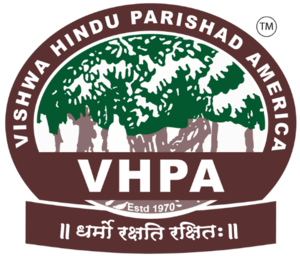
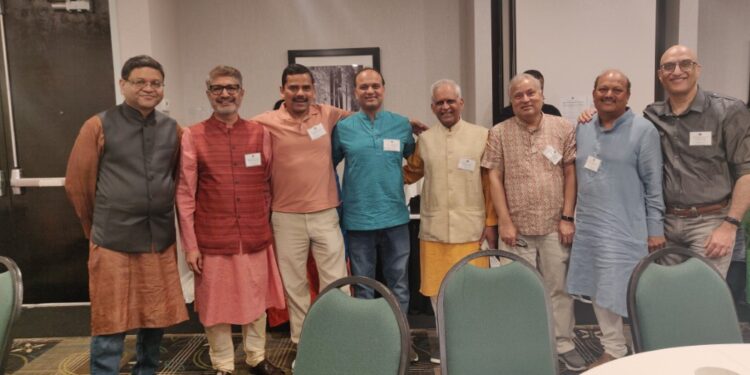
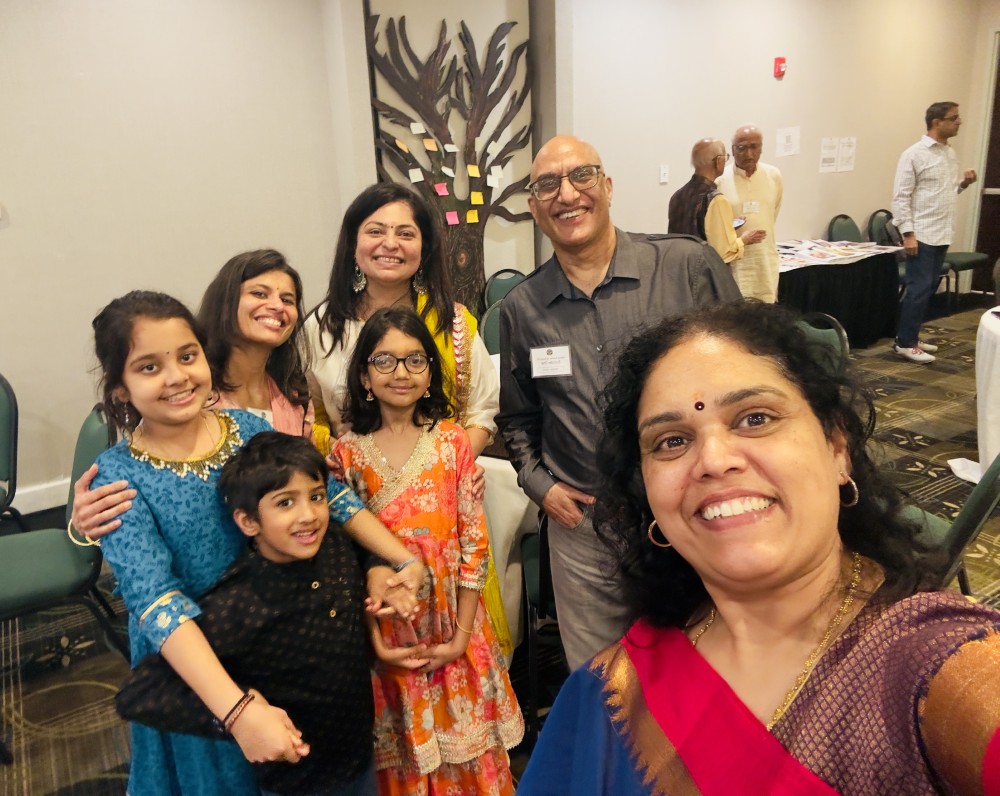

![[ India Today ] Ohio senator JD Vance thanks wife, a Hindu, for helping him find Christian faith](https://hinduvishwa.org/wp-content/uploads/2024/06/us-senator-jd-vance-reveals-how-his-hindu-wife-usha-helped-him-find-his-christian-faith-image-re-272530504-16x9_0-120x86.webp)




